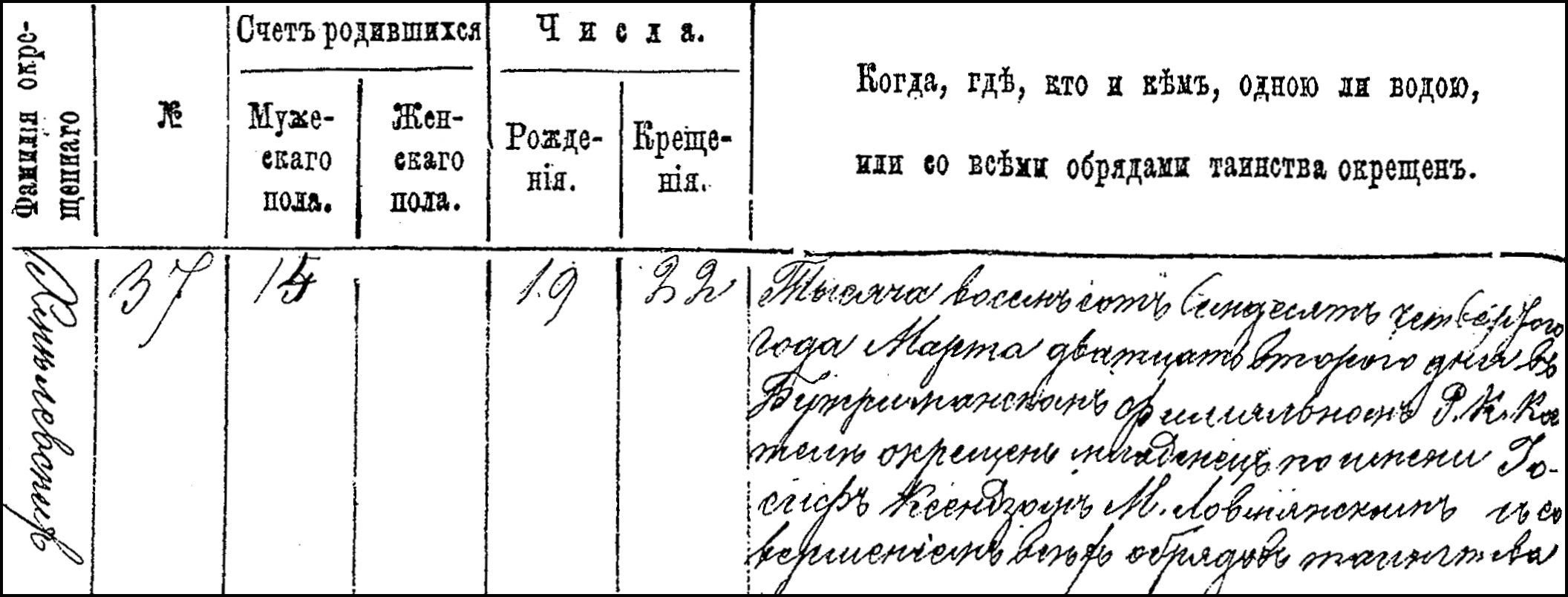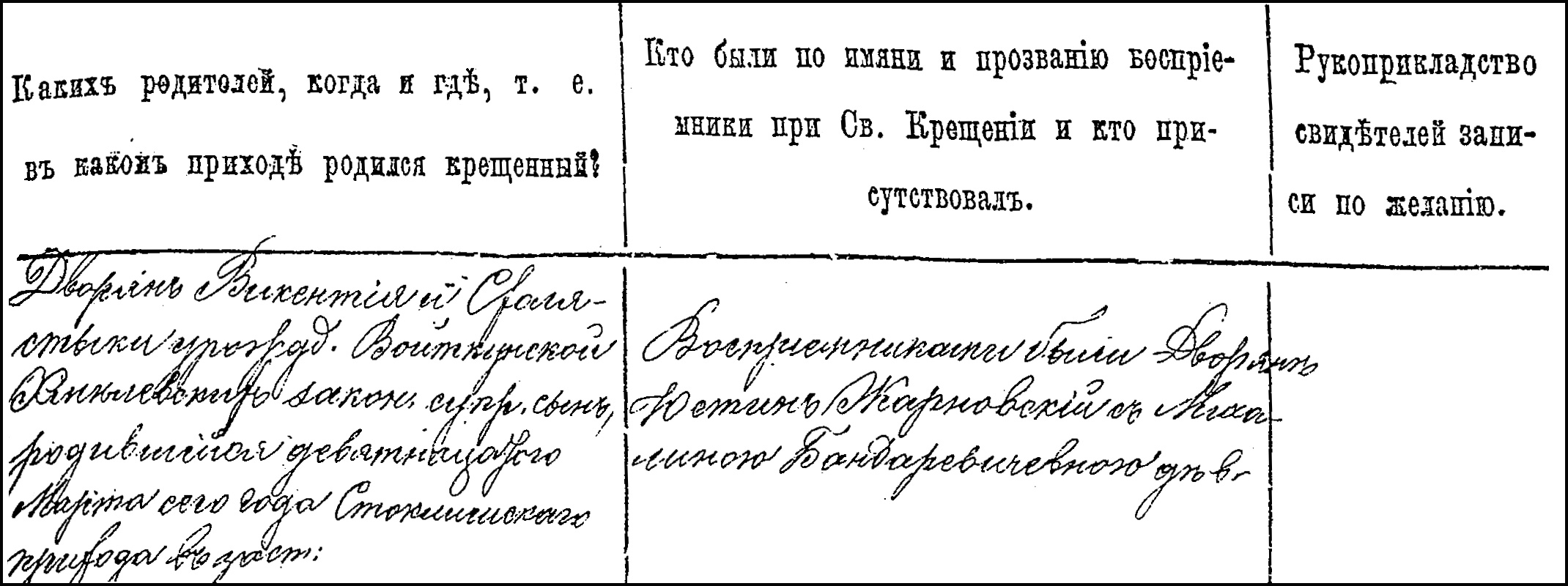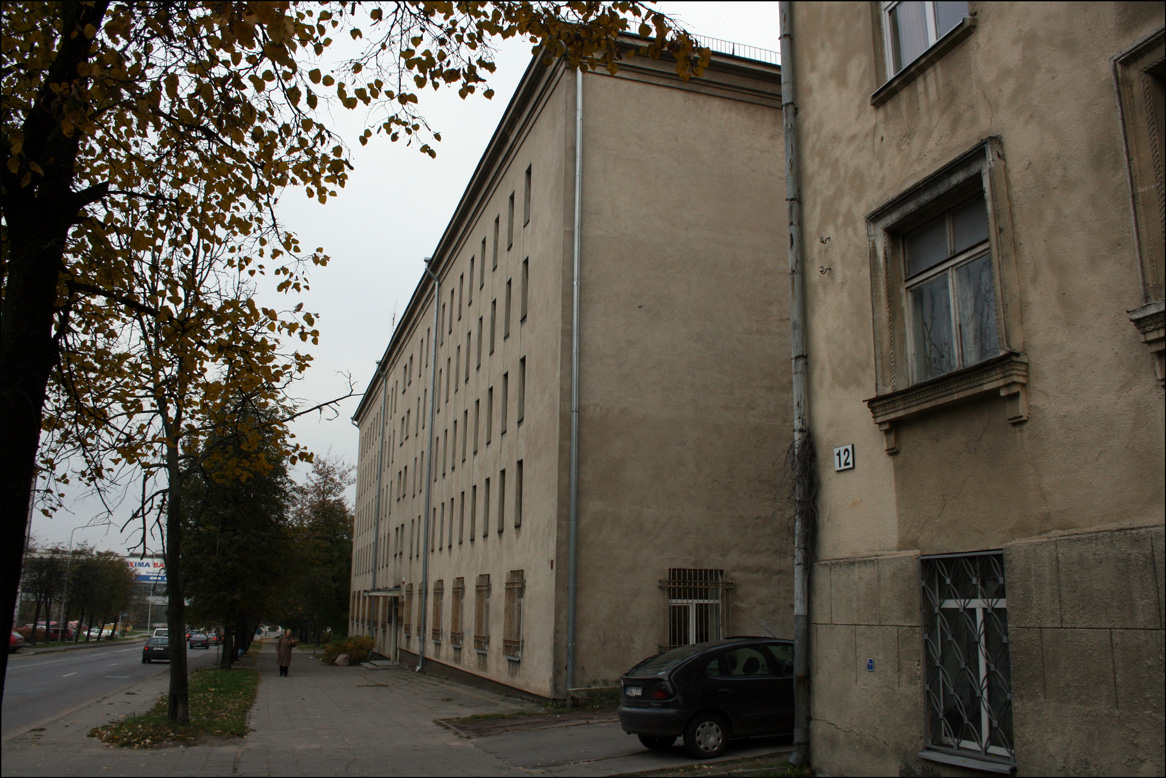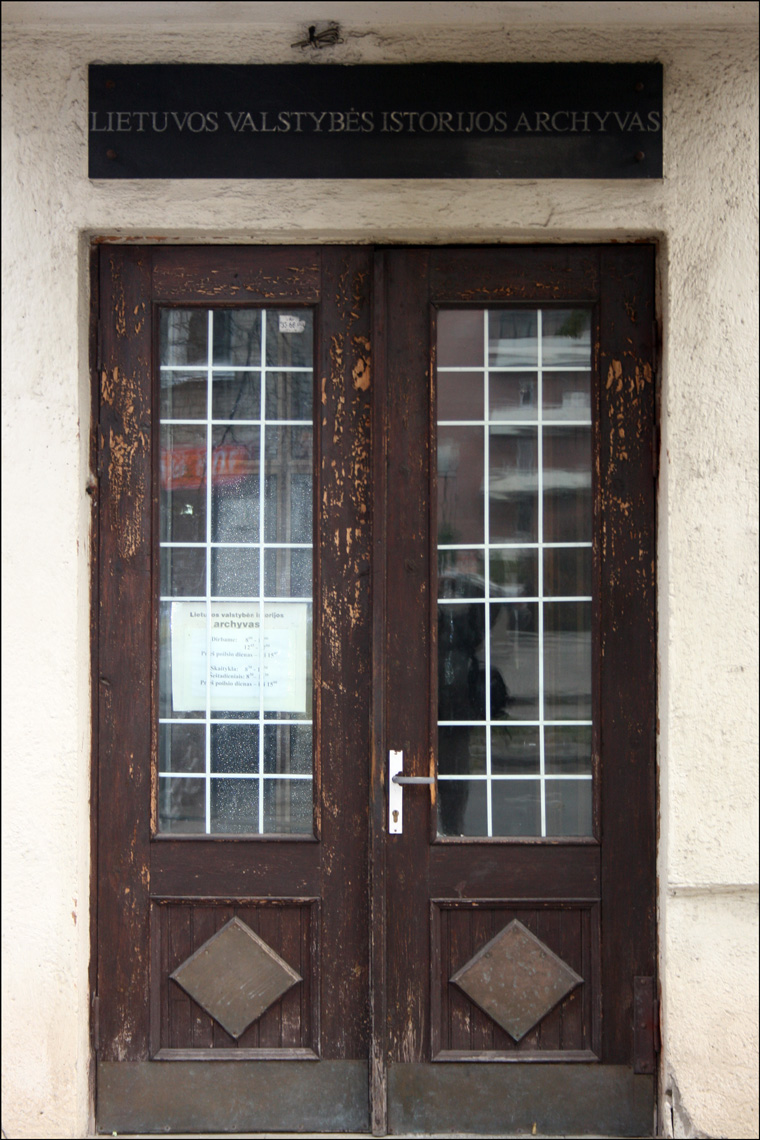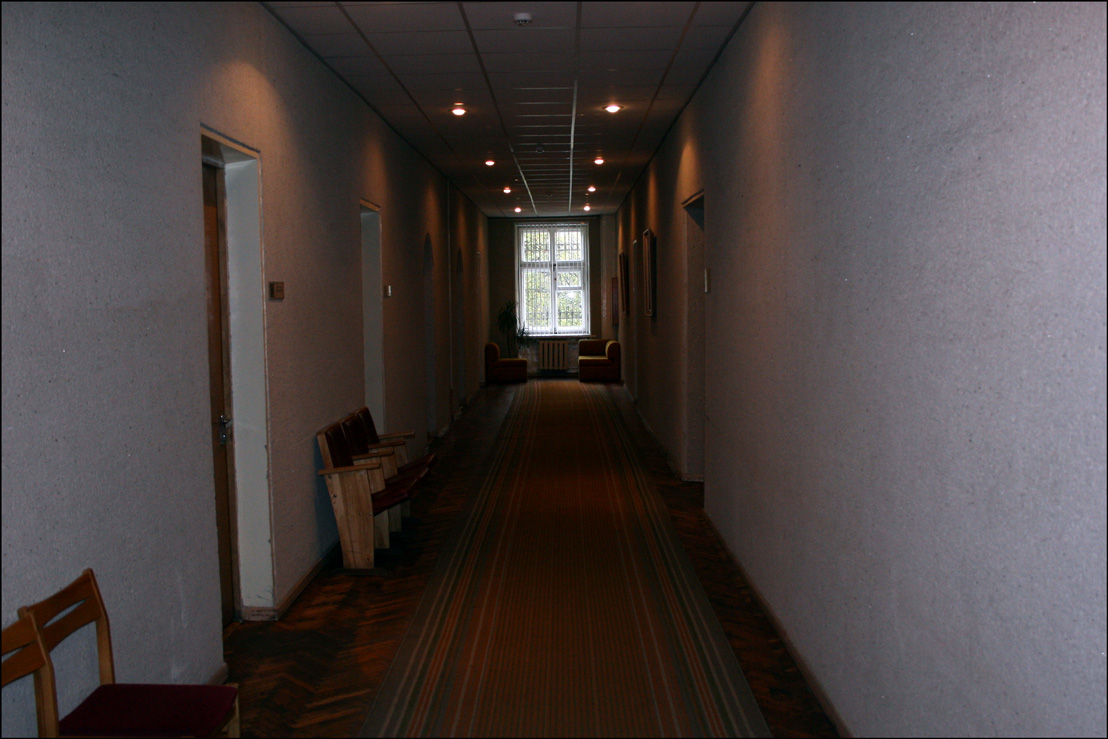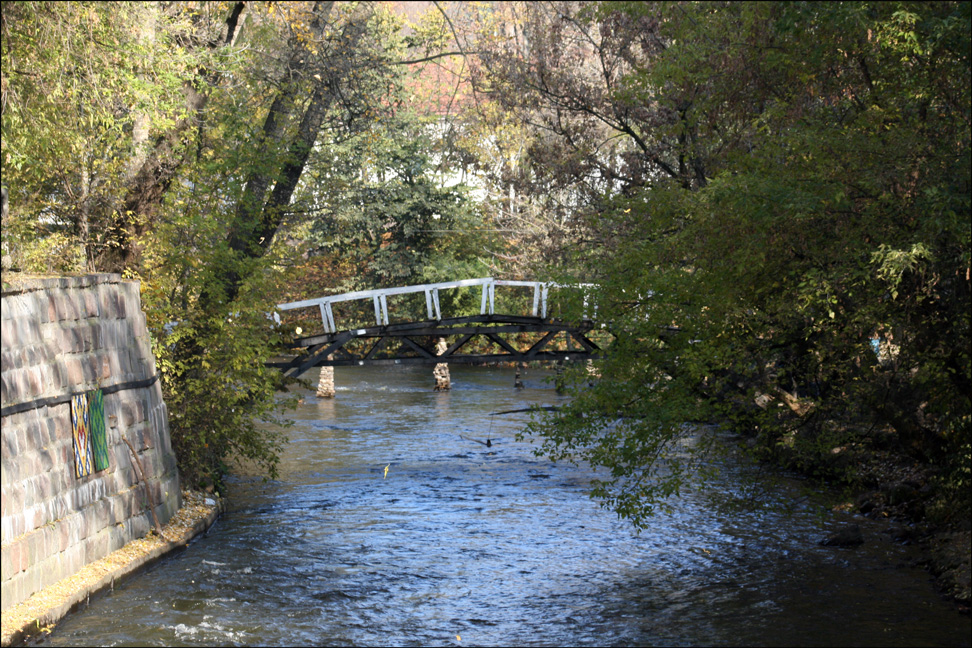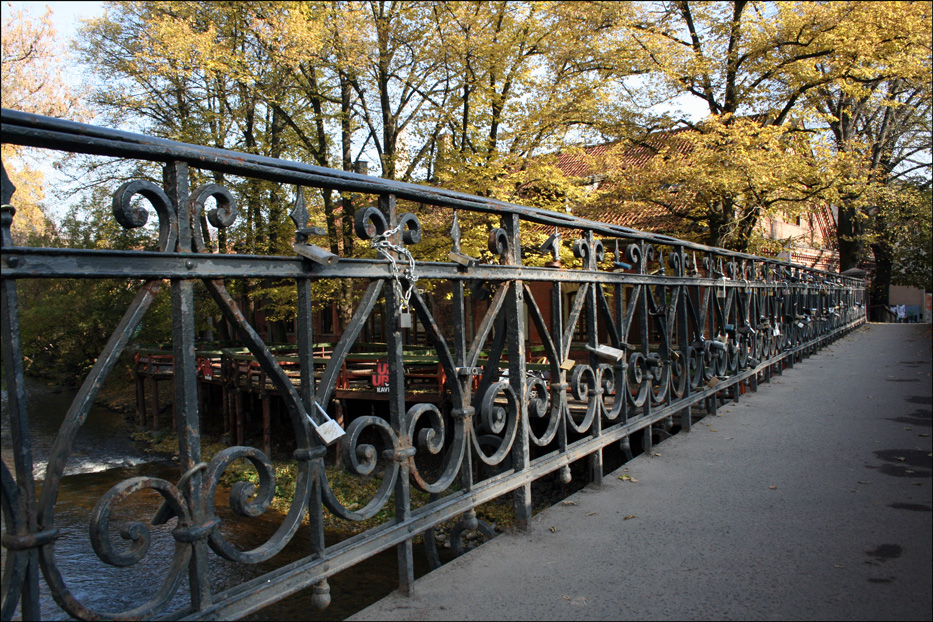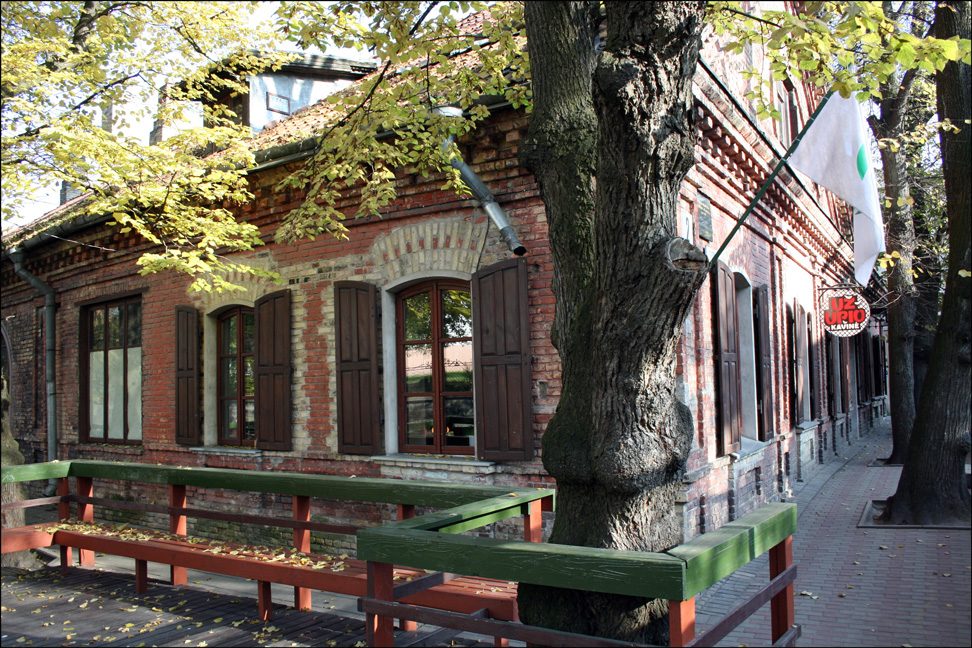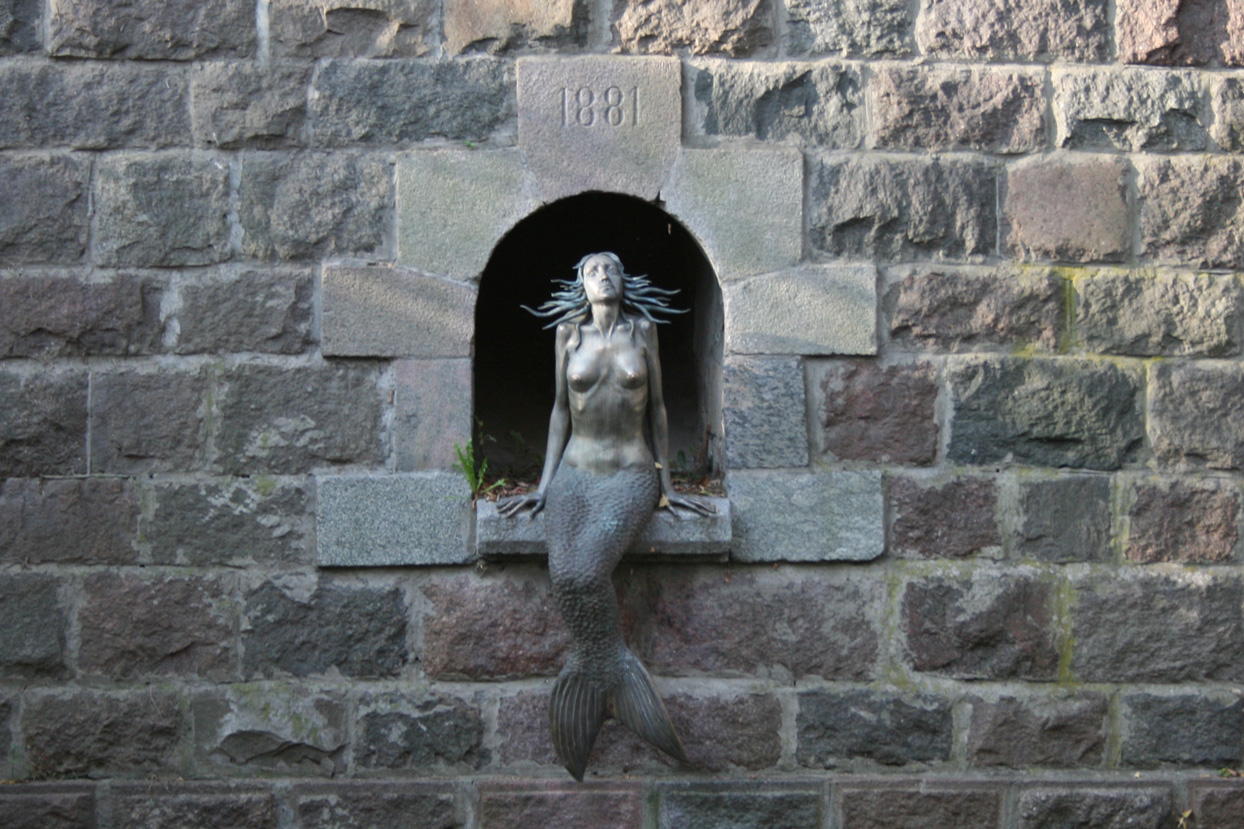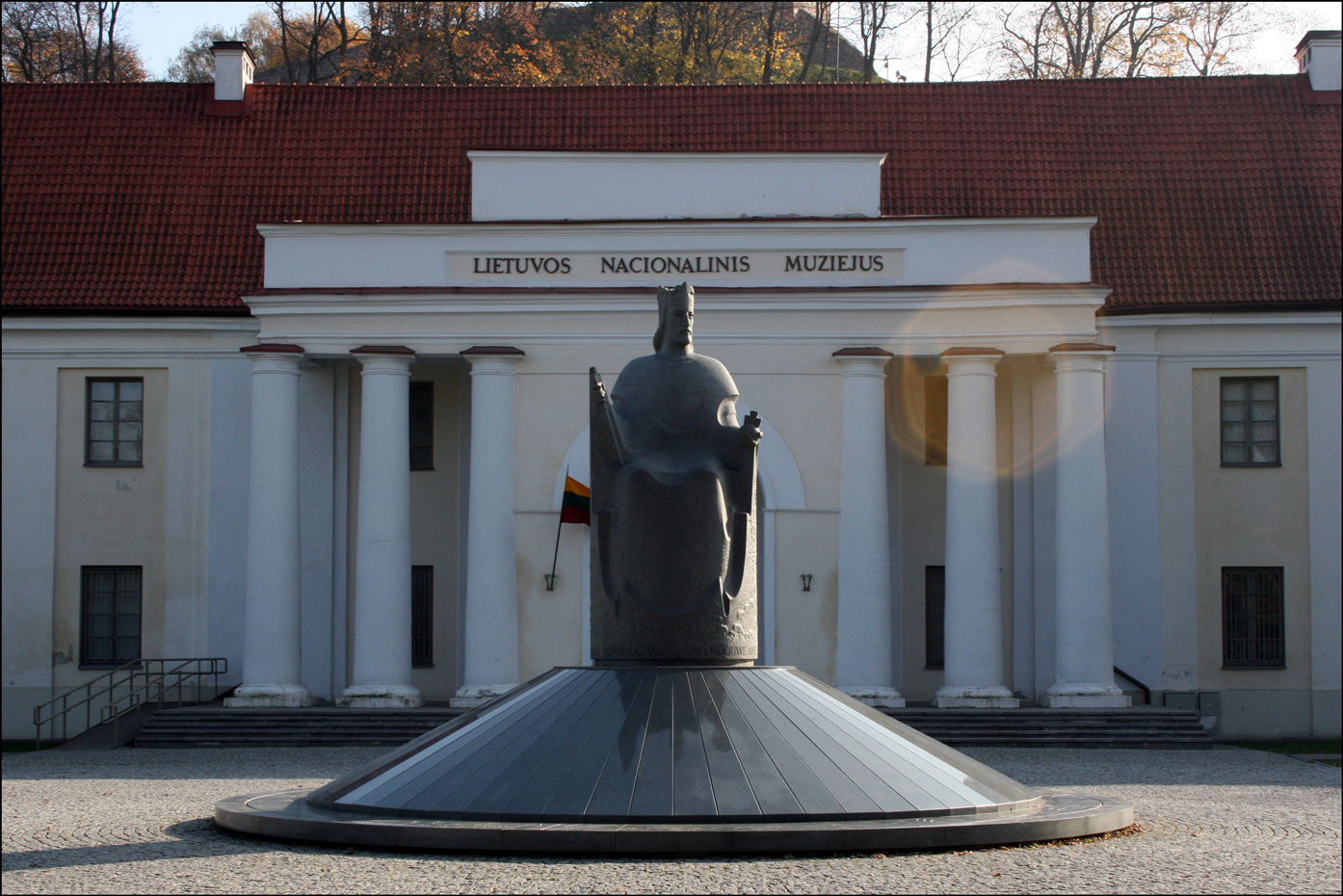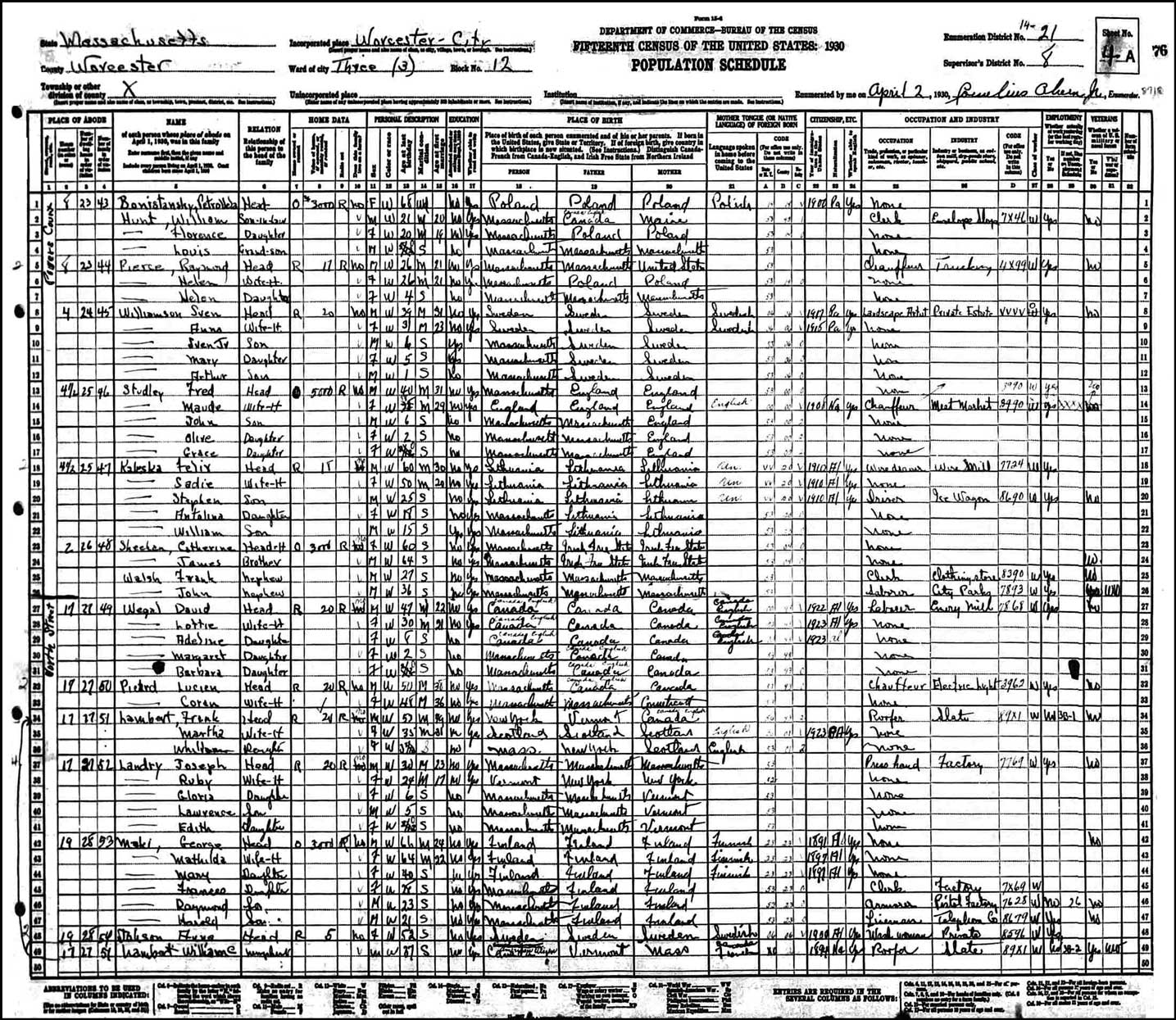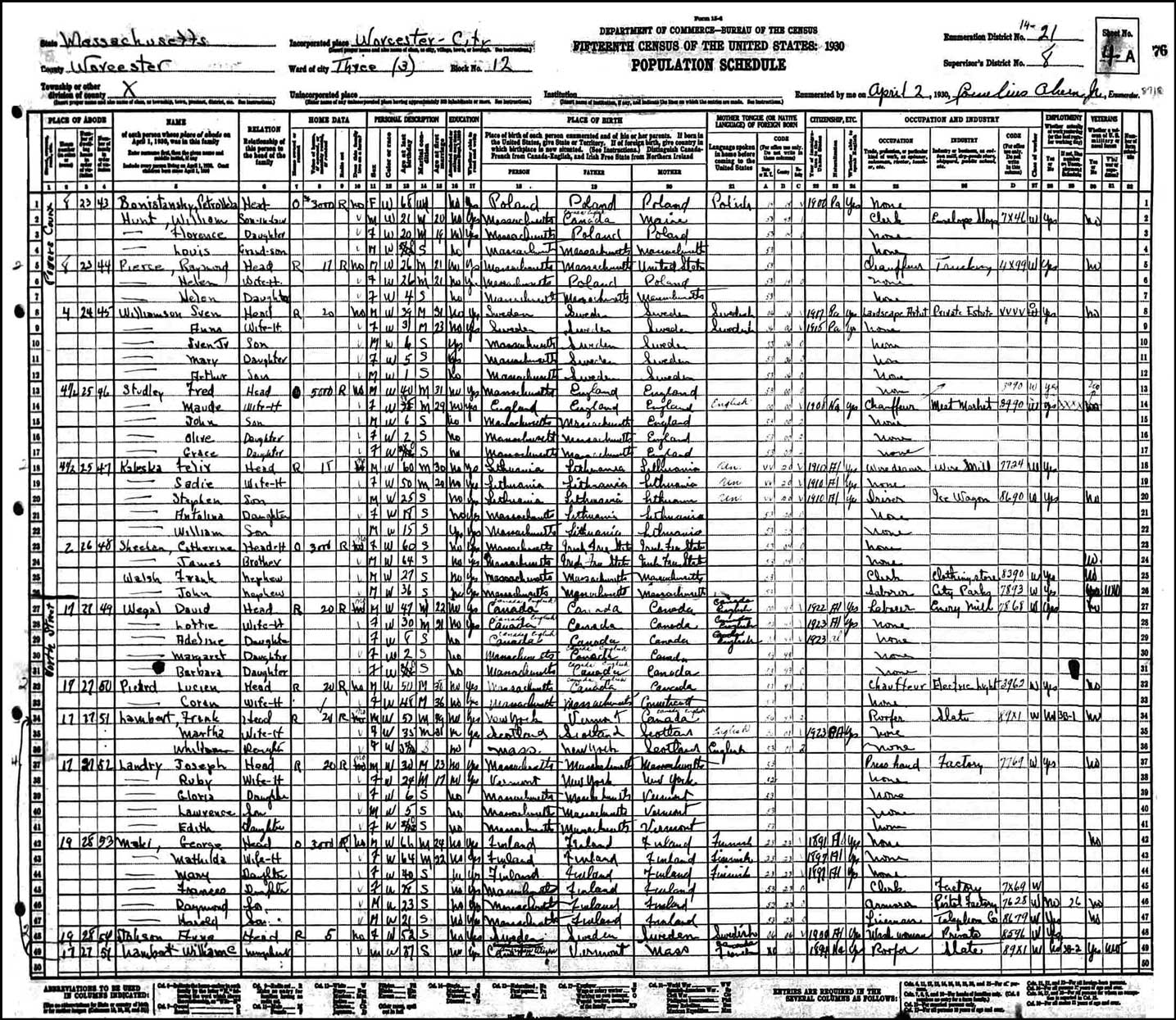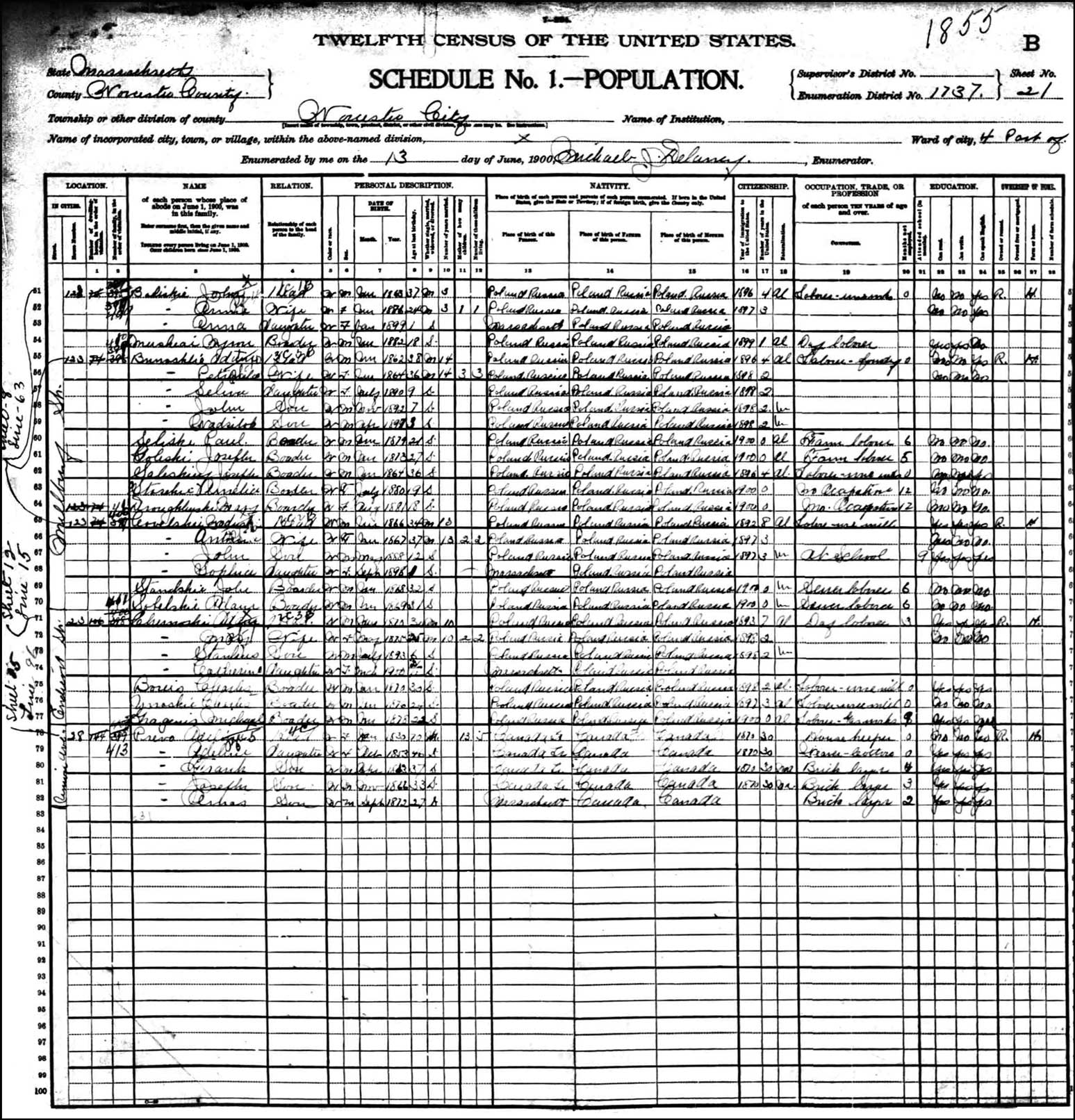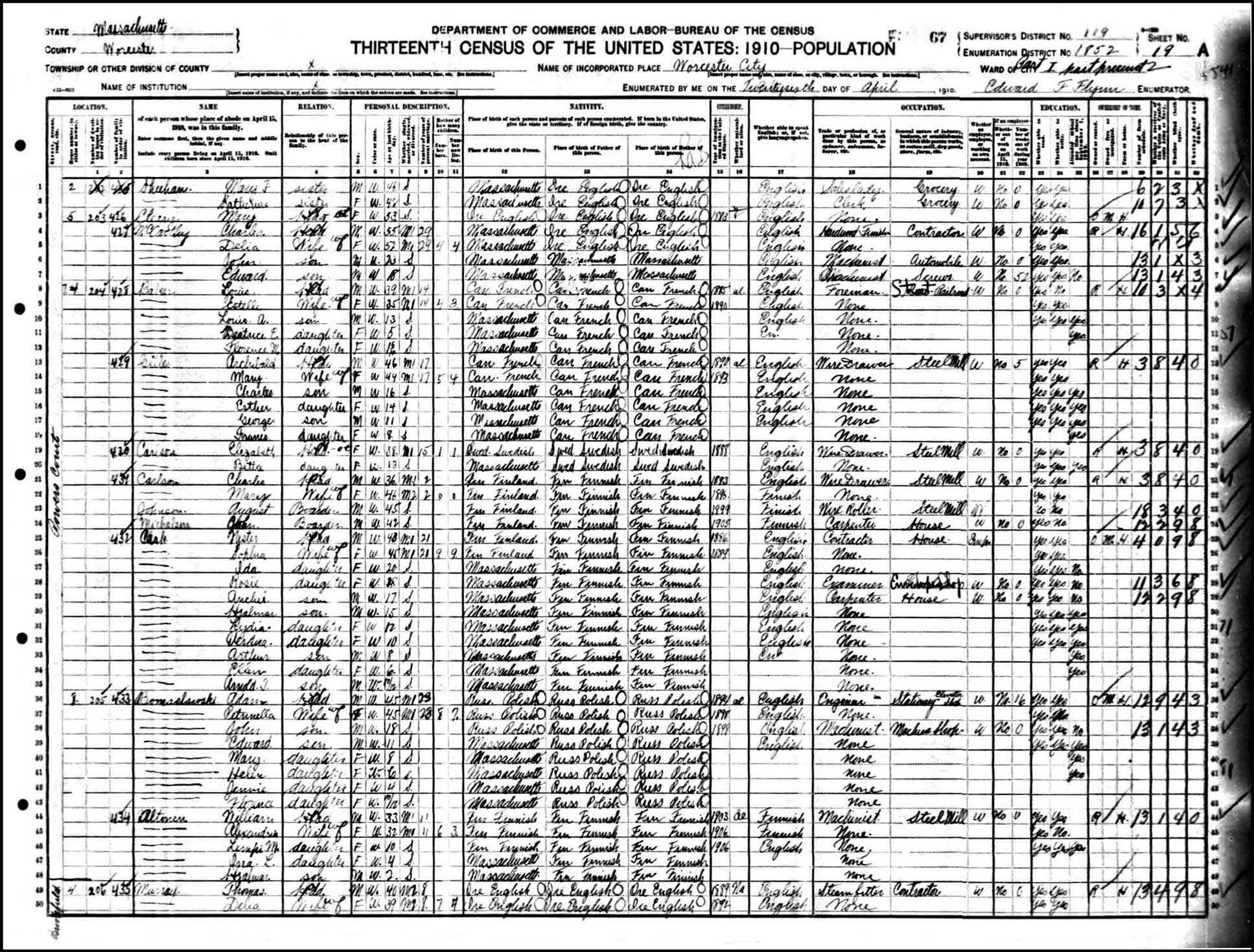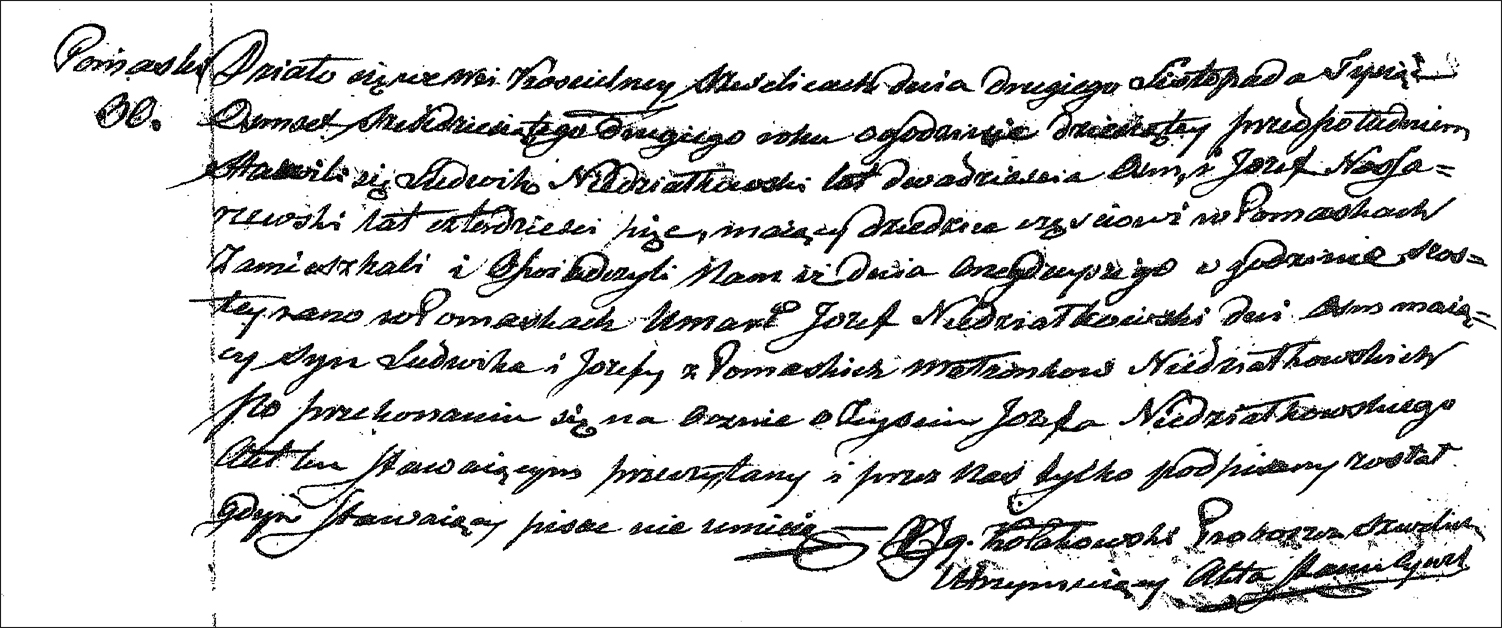According to documents in the United States, Józef Chmielewski was born on 03 April 1874, but his birth and baptismal record on file with the Lithuanian State Historical Archives states that he was born on 19 March 1874.
Birth and Baptismal Record of Józef Chmielewski – 1874 (Left)
Birth and Baptismal Record of Józef Chmielewski – 1874 (Right)
SOURCE: Roman Catholic Parish of Butrymonys, Gubernia Wileńska, Russian Empire. Diocesan Copy of Parish Records, MerkinÄ— Diocese. F. 604, Ap. 28, B. 41, L. 52v-53, Nr. 37. Józef Chmielewski baptism (1874); Lithuanian State Historical Archives, Vilnius, Lithuania.
Click on the link for a PDF copy of the Birth and Baptismal Record of Józef Chmielewski – 1874. Translated from the Russian, the record states:
Surname of the one baptized: Chmielewski
No.: 37
Birth Number (Males): 14
Date of Birth: 19
Date of Baptism: 22When, where, who, by whom, baptized with water alone or with all the rites of the sacrament.
In the year one thousand eight hundred seventy four on March the twenty-second in the Butrymance [one word?] Roman Catholic parish church a child was baptized by the name Józef by the Reverend [one word?], with all the rites of the sacramentOf what parents, when and where, i. e. in which parish was the baptized person born?
Of the nobles Wincenty and Scholastyka [one word?] Wojtczuka Chmielewski, lawful spouses, the son, born the nineteenth of March of this year in Stakliškės parish [one word?]Who were the godparents, by first name and any other name, and who was present at Holy Baptism?
The godparents were the nobles Justyn Żarnowski and [M?] Bandarewiczewka, an unmarried woman
Józef Chmielewski was the half brother of my grandmother, Helena Chmielewska. The two shared the same father but different mothers.
When my cousin and I found this record in the Lithuanian state archives, we were surprised to see the family listed as nobles. This almost certainly meant that they were lesser nobles who owned land at a time when most people were landless peasants.
Although Józef was born in what was Russia and is now Lithuania, he was of Polish ancestry.
This document is the first record I obtained from Lithuania.
Copyright © 2007 by Stephen J. Danko

